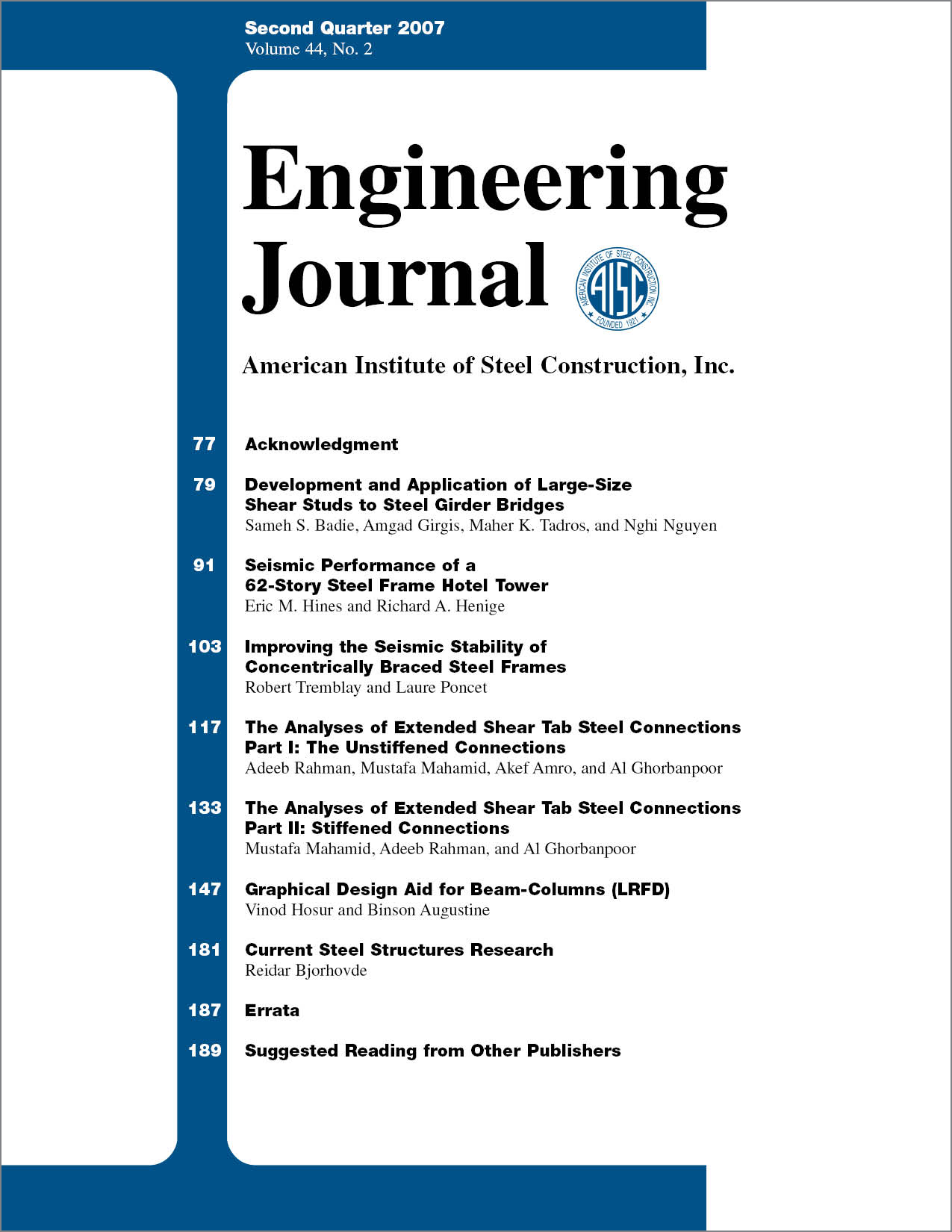Improving the Seismic Stability of Concentrically Braced Steel Frames
DOI:
https://doi.org/10.62913/engj.v44i2.906Keywords:
Seismic Design, Research, Structural and Buildings Systems, Lateral SystemsAbstract
An analytical study was performed to examine the seismic stability of multi-story concentrically braced steel frames. The building height was varied from 4 to 16 stories and three braced frame systems were studied: conventional braced frames, buckling-restrained braced frames, and dual buckling-restrained braced frames. All structures were designed according to Canadian seismic provisions. Different force modification factors were used and both the equivalent static load procedure and the modal response spectrum analysis were considered in design. P-delta effects were accounted for in the design of some of the buildings. The performance of the various structures is evaluated and compared by means of incremental dynamic analysis. The results show that the potential for instability for conventional braced frames is higher for taller structures or when the design loads are reduced. Tall buckling-restrained braced frames were also found to be prone to dynamic instability. Dual buckling-restrained braced frames exhibit a more robust response and represent a promising solution for tall braced steel frames.

